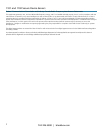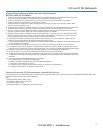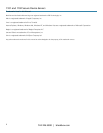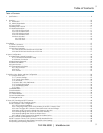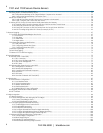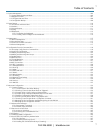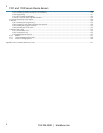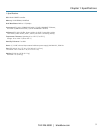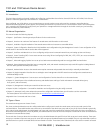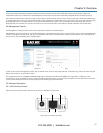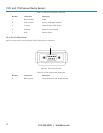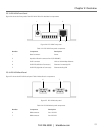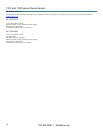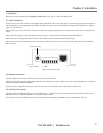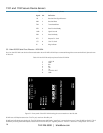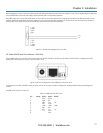
1101 and 1102 Secure Device Servers
724-746-5500 | blackbox.com
10
2. Overview
2.1 Introduction
This User’s Manual walks you through installing and configuring your Black Box Secure Device Servers (LES1101A or LES1102A). Each of these
products is referred to generically in this manual as a “console server.”
Once configured, you will be able to use your console server to securely monitor access and control the computers, networking devices,
telecommunications equipment, power supplies, and operating environments in your data room or communications centers. This manual guides
you in managing this infrastructure locally (across your operations or management LAN or through the local serial console port), and remotely
(across the Internet or private network).
2.2 Manual Organization
This manual contains the following chapters:
• Chapter 1. Specifications: Lists the general specifications for the console servers.
• Chapter 2, Overview: An overview of the features of console server and information on this manual.
• Chapter 3, Installation: Physical installation of the console server and how to interconnect controlled devices.
• Chapter 4, System Configuration: Describes the initial installation and configuration using the Management Console. Covers configuration of the
console server on the network and the services that will be supported.
• Chapter 5, Serial Port and Network Host: Covers configuring serial ports and connected network hosts, and setting up Users and Groups.
• Chapter 6, Secure Tunneling (SDT): Covers secure remote access using SSH and configuring for RDP, VNC, HTTP, HTTPS, etc. access to network
and serially connected devices.
• Chapter 7, Alerts and Logging: Explains how to set up local and remote event/data logs and how to trigger SNMP and email alerts.
• Chapter 8, Power Management: Describes how to manage USB, serial, and network attached power strips and UPS supplies including Network
UPS Tool (NUT) operation and IPMI power control.
• Chapter 9, Authentication: Access to the console server requires usernames and passwords that are locally or externally authenticated.
• Chapter 10, Nagios Integration: Describes how to set Nagios central management with SDT extensions and configure the console server as
a distributed Nagios server.
• Chapter 11, System Management: Covers access to and configuration of services that will run on the console server
.
• Chapter 12, Status Reports: View a dashboard summary and detailed status and logs of serial and network connected devices (ports,
hosts, power, and environment)
• Chapter 13, Management: Includes port controls that Users can access.
• Chapter 14, Basic Configuration: Command line installation and configuration using the config command.
• Chapter 15, Advanced Config: More advanced command line configuration activities where you will need to use Linux commands.
The latest update of this manual can be found online at www.Black Box.com/download.html
• Appendix: Linux Commands and Source Code.
2.3 Types of Users
The console server supports two classes of users:
First, there are the administrative users who will be authorized to configure and control the console server; and to access and control all the
connected devices. These administrative users will be set up as members of the admin user group and any user in this class is referred to generically
in this manual as the Administrator. An Administrator can access and control the console server using the config utility, the Linux command line, or
the browser-based Management Console. By default, the Administrator has access to all services and ports to control all the serial connected devices
and network connected devices (hosts).
The second class of users are those who have been set up by the Administrator with specific limits of their access and control authority. These users
are set up as members of the users user group (or some other user groups the Administrator may have added). They are only authorized to perform
specified controls on specific connected devices and are referred to as Users. These Users (when authorized) can access serial or network connected



